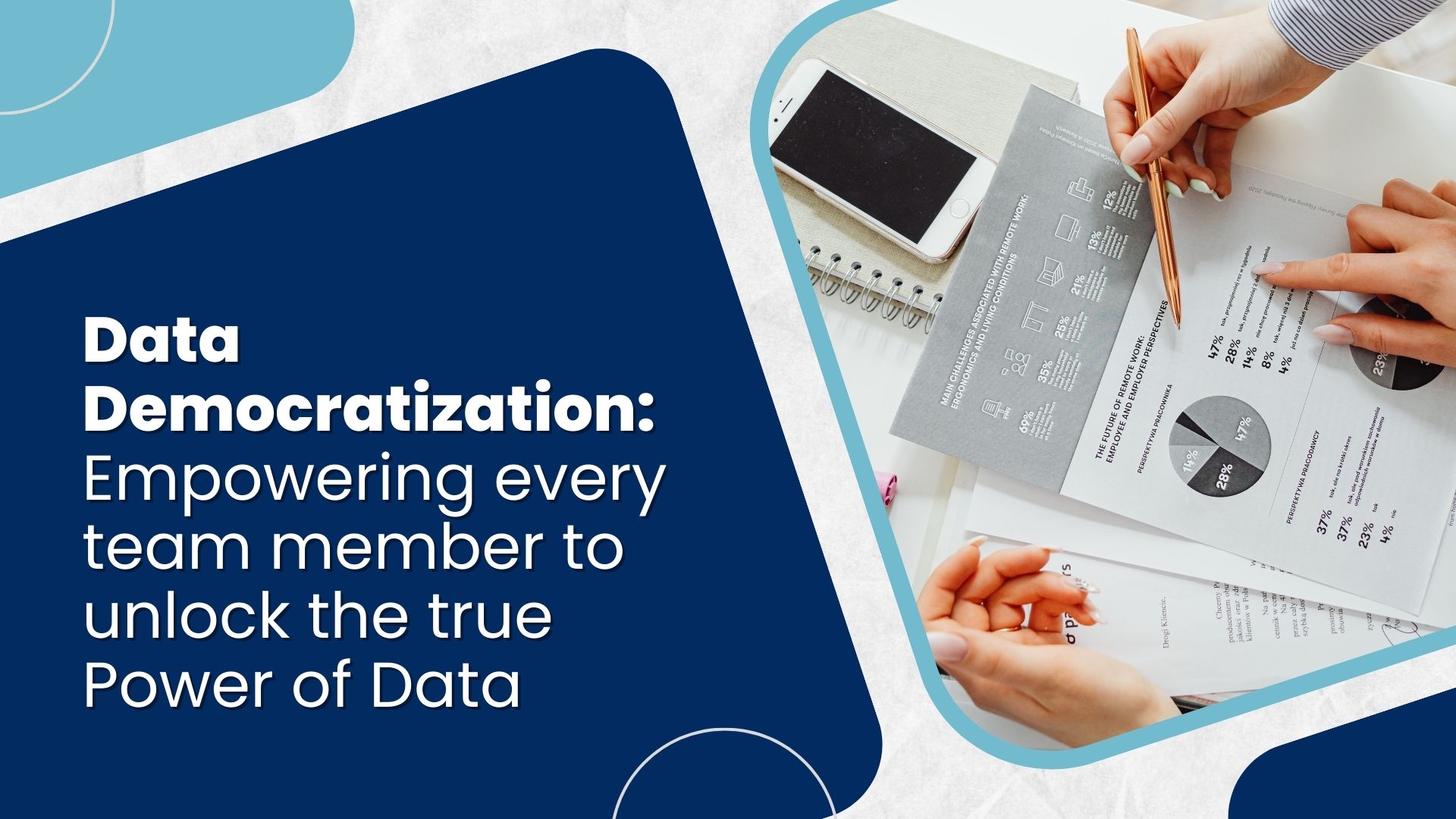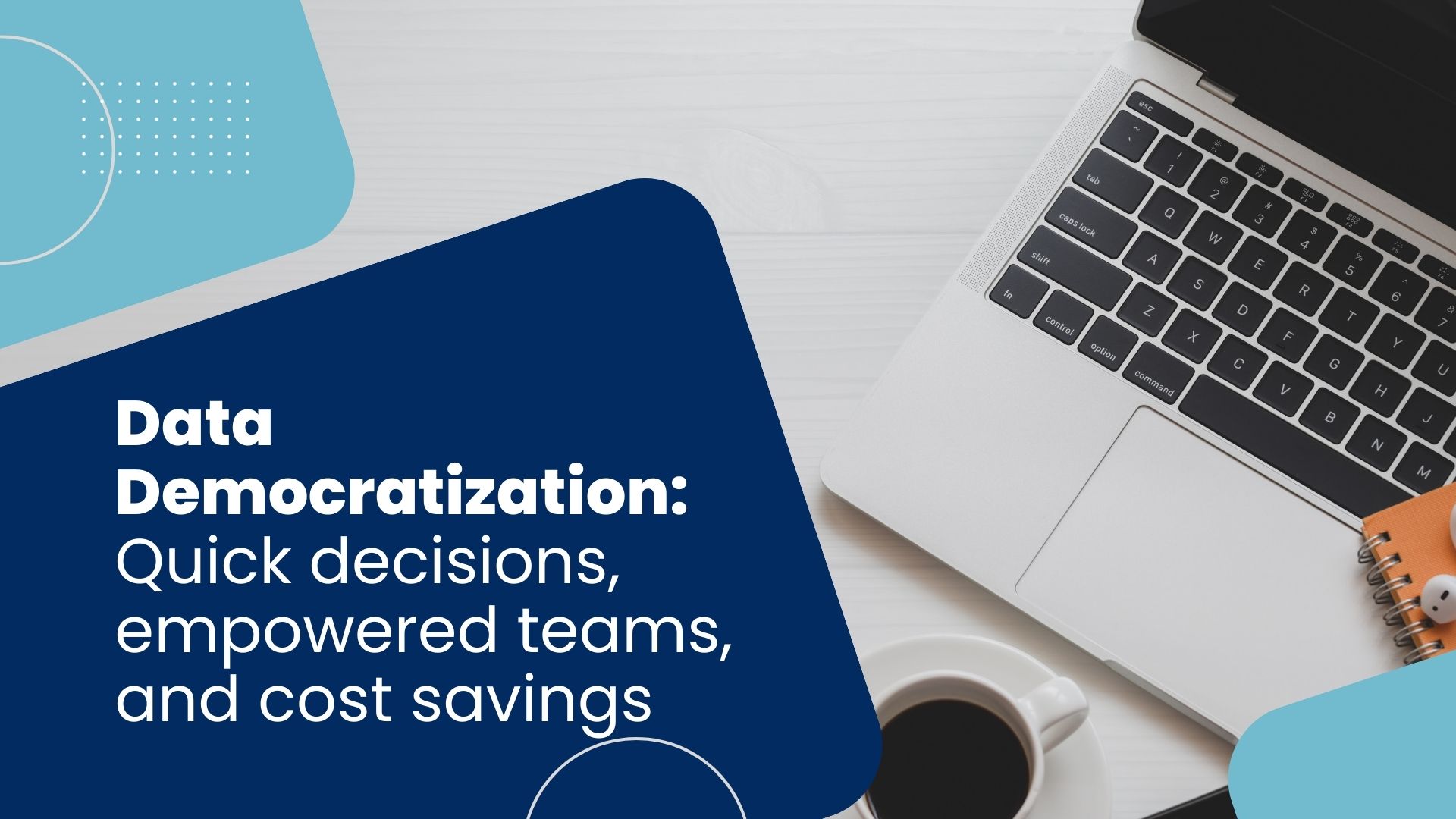- Home
- Data Democratization
- Data Democratization: Powering ...
Table of Contents
Introduction

Organizations are relentlessly looking for ways to stay ahead of the competition. However traditional barriers to Accessing and Analyzing Data have placed decision-making and innovation in the hands of—Data Scientists and Analysts with special skills. But there is a revolutionary idea that is changing the game: Data Democratization, driven by No-Code Data Analytics tools.
In this blog, we’ll explore how Data Democratization can empower your organization, and why No-Code tools are the key to unlocking its potential.
The Challenge of Traditional Data Analysis
Unlocking the Data Treasure Trove
Organizations possess vast amounts of Data, from customer demographics to sales trends. However, the ability to extract value from these Data is often hampered by the complexity of Traditional Data Analysis methods. Complex Coding, SQL queries, and specialized software can feel like insurmountable obstacles for non-technical users.
The Expertise Bottleneck
Data Analytics skills are a valuable resource, with Data Scientists and Analysts often overwhelmed by requests from different departments. This bottleneck hampers decision-making processes and stifles innovation, leaving organizations lagging behind the competition.
Introducing Data Democratization
Empowering the Many
Data Democratization is all about breaking down these barriers. It is a concept that attempts to make Data and Data Analytics accessible to a wider audience within an organization. By doing so, it enables non-technical users to harness the power of Data, gain Insights, and make informed decisions.
Fostering a Data-Driven Culture
In addition to breaking down technological barriers, Data Democratization encourages a cultural change. It encourages a Data-Driven mindset throughout the organization, where every decision is informed by Data Insights.
The No-Code Data Analytics Revolution
No-Code Data Analytics tools are at the forefront of the Data Democratization movement. These platforms have the potential to change the way your organization interacts with Data.
Accessibility for All
No-Code Data Analytics tools have intuitive user interfaces that allow anyone in your organization to access Data. Whether you’re a marketing manager or an HR professional, these tools allow you to dive into Data without requiring coding skills.
Efficiency Unleashed
Gone are the days of waiting for Data Analysts to develop complex queries. No-Code tools empower users to perform Data Operations, Analytics, and Reporting quickly and efficiently. This newfound efficiency can drastically improve operational processes.
Easy Data Integration
These platforms often come with pre-built connectors that allow you to effortlessly integrate Data from different sources and databases. This integration capability ensures you have a comprehensive view of the Data landscape, resulting in rich insights.
Visualizations Made Easy
No-Code tools provide a wide range of design options. You can create meaningful charts, graphs, and dashboards effortlessly. Visualization is a powerful way to effectively communicate Insights within your organization, even if you’re not a Data Scientist.
Automation Magic
No-Code platforms like PolusAI support the automation of repetitive Data Tasks, such as Data Cleansing, Transformation, and reporting. This not only saves time but also reduces the risk of Data Analysis errors.
Benefits of Data Democratization with No-Code Tools

Implementing Data Democratization through the use of No-Code Data Analytics tools offers various benefits:
Quick decision making
By putting Data at teams’ fingertips, decisions can be made faster. Your organization can react quickly to changing market conditions and stay one step ahead.
Empowerment of Non-Technical Staff
Non-technical users have the ability to Collect and Analyze Data independently. This creates a culture of control and innovation, where employees are encouraged to be proactive with Data.
Cost Savings
Reducing the need for specialized Data Processors can result in significant cost savings. Your organization can allocate resources more efficiently and still reap the benefits of Data Analytics.
Improved communication
Data Democratization encourages cross-functional collaboration. Departments can easily share and collaborate on Data-Driven projects, resulting in rich Insights and better-informed decisions.
Improved Data Quality
When the Data is more targeted, it is better analyzed, which can improve the quality and accuracy of the Data. Clean, reliable Data is the foundation of effective Data Analysis.
Competitive Edge
Organizations that embrace Data Democratization gain a competitive advantage in their markets. They are well poised to use Data as a strategic asset, which can be a game changer in today’s business environment.
Implementing Data Democratization
To effectively implement Data Democratization through No-Code Data analysis tools, the following steps should be considered:
Needs Assessment
Identify the Data needs of teams and departments within your organization. What Data do they need, and what Insights can they glean from it?
Selecting the Right Tool
Choose PolusAI, a No-Code Data Analytics platform that fits your organization’s needs and budget. Considerations include ease of use, flexibility, and integration capabilities.
Training and Support
Provide training and support to non-technical users to ensure they can use the chosen tool effectively. This may include basic Data Analysis skills and familiarity with the interface of the tool.
Cultivate a Data-Driven Culture
Promote a culture of Data-Driven decision-making throughout the organization. Share success stories and demonstrate the benefits of Data Democratization for employees at all levels.
Iterate and Improve
Continue to monitor the impact of your Data Democratization efforts and revise policies based on feedback and evolving needs. This iterative approach ensures that you’re maximizing the benefits of Data Democratization.
Conclusion
The Data Democratization powered by No-Code Data Analytics tools is the key to unlocking the full potential of your organization’s Data assets. By making Data available to a wider audience, you can drive faster decision-making, spur innovation, and gain a competitive edge in today’s Data-Driven business environment.
Embrace this paradigm shift and improve your organization’s ability to harness the power of Data like never before.

Apoorva is a passionate and driven individual who accidentally found her interest in Business Intelligence and Data Analysis while studying Travel and Tourism. Despite her first love for being Content Writer and Blogger, she now creates compelling content on NLP-driven decision-making and a No-Code Data Platform that influences businesses. Her commitment to making Data accessible and Democratized for everyone has led her to work with NewFangled Vision on NLP-based Conversational Driven Data Analysis.
Category
- Case Study
- CRM GenAI
- Customer Sentiment Quester
- Data Analytics
- Data Democratization
- Data Security
- Decision Enabler Platform
- Enterprise GenAI
- Excel Sheet Analytics
- Finance Modelling
- GenAI for manufacturing
- Generative AI
- Generative BI
- Log Analytics
- Media Analytics
- NewFangled
- NewFangled AI Architecture
- NewFangled VADY
- Newfangled Vision
- No-Code BI
- No-Code ETL
- PolusAI
- POS GenAI
- Real Estate Anlaytics
- Real-Time Data Analytics
- Research
- Self-Service Analytics
- Stream Analytics
- Uncategorized
- VADY

